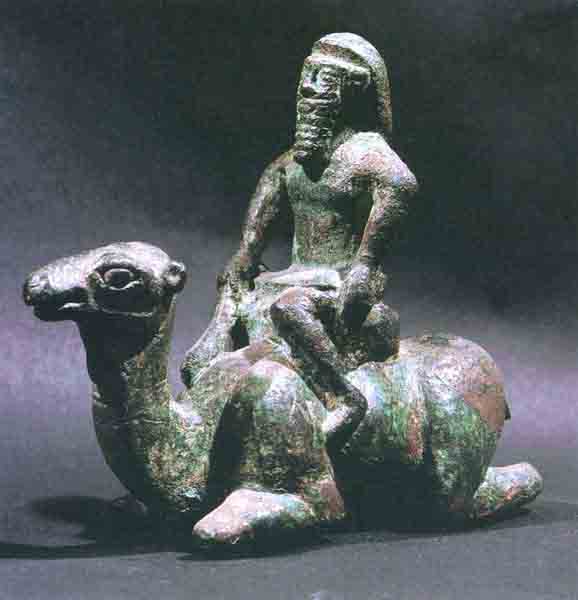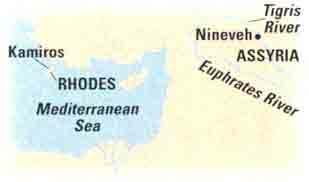
Hands on the reins, a bronze rider sits poised on a crouching camel, prepared to lurch into motion. Domesticated camels have been known in the Middle East at least since the late second millennium B.C., when they helped expand trade across the desert lands. The earliest Near Eastern texts describing domesticated camels are inscriptions of the Assyrian king Assur-bel-kala (1074–1057 B.C.), which mention herds of camels as a sort of oddity. The oldest undisputed representation of an Aramean camel-rider—dating to the tenth century B.C.—was found at Tell el-Halaf in Mesopotamia.

Although archaeologists discovered this sculpted dromedary, or one-humped camel, at Kamiros on Rhodes, many scholars consider it to be of Late Assyrian origin. The rider’s heavy, long hair and stylized beard reflect those of camel-riders depicted in reliefs from the palace of King Assurbanipal (668–c. 630 B.C.) in Nineveh, then the capital of Assyria, the vast northern Mesopotamian empire.
The Bible associates camels with the Amalekites (1 Samuel 30:17), Midianites (Judges 6:5) and Ishmaelites (1 Chronicles 27:30), who lived to the south and east of Israel and Judah. Perhaps these peoples introduced the Israelites to camels about the same time as the Assyrians learned of them, by the end of the second millennium B.C.
Already a library member? Log in here.
Institution user? Log in with your IP address.

